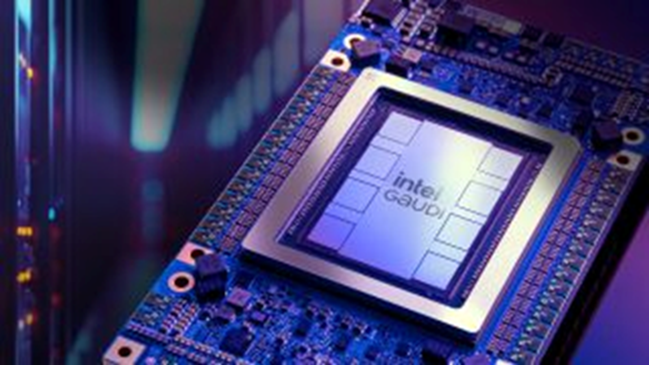Supercomputer development has been characterized by shifting bottlenecks across various components since the 1980s. With its extensive processor-making experience, Intel understands the challenges of creating roadmaps in this dynamic field. The company’s Xe GPU architecture and OneAPI superstructure aimed to produce scalable GPUs for diverse applications. Intel’s roadmap evolved from the Intel Data Center GPU Max series (formerly Ponte Vecchio) to Falcon Shores, with changes in design and release schedules. Despite rumors and restructuring, Intel remains committed to its AI GPU plans, adjusting Falcon Shores to a TPU-GPU design without an integrated x86 CPU. The company anticipates a balance between CPU, TPU, and GPU in future AI workloads, offering customers a range of options across its product lines. The industry now awaits Intel’s execution of its scalable GPU vision.

I started following supercomputers in the mid-1980s when they were used for massive visualization problems, from biology and astronomy to nuclear bomb simulations. It was interesting to see how the bottleneck would shift from CPU to memory to processor-to-process communications and then back to CPU speed. But the bottleneck du jour (and de jure) never stood still—and it still hasn’t and probably never will.
So, making a roadmap in supercomputer land is an aspiration as much as a commitment—subject to revisions, intentions, and, most of all, ability.
Intel is no exception to the rule, and given the company’s history of making processors for the past 50 years, it knows the rules better than anyone.
However, some of its observers are new to the game and need to sell advertising, so they report on the exceptions and sensations. Intel isn’t the only supplier that gets such scrutiny and review, but it has been getting more than its share lately.
When Intel announced its Xe GPU architecture and OneAPI superstructure in 2017, the plan was to build a scalable GPU architecture that could be used in low-end notebooks, gaming systems, workstations, and supercomputers. One of the first proofs of concept was the announcement of the Max series, which today powers the Aurora supercomputer at Argonne National Laboratory. Skipping over how that project came about, it established Intel as a serious GPU maker and not just an iGPU UMA supplier.
But the Max series was first-generation and could be improved like any first-generation part. In 2022, Intel showed a roadmap that revealed the next gereration, which was code-named Rialto Bridge, and a future high-end GPU to be followed, code-named Falcon Shores, which would have an XPU architecture.

Then, in 2023, the company announced that the Max series product line wouldn’t be extended. It said it would skip the replacement (code-named Rialto Bridge) product and jump to the third-generation product, code-named Falcon Shores, forecasted for 2025. Intel also said it would move to a two-year GPU release cadence for data center GPU products. In March 2023, high-profile Raja Koduri announced he would leave Intel’s graphics division at the end of the month in favor of an AI-focused software startup.
But Intel was still sorting things out on its HPC strategy and also had Gaudi, a dedicated AI processor. Intel pulled the x86 from the Falcon Shores-named product, making it a GPU-only design. Intel also said Falcon Shores would incorporate some of Gaudi’s AI features for its next-generation Xe graphics for HPC. At the ISC 24 conference, the rumor mill lit up that Falcon Shores would have a power rating of up to 1,500W.
In mid-September, the company gave the impression Falcon Shore was dead when CEO Pat Gelsinger said at the Deutsche Bank analyst conference last month that Intel was exiting the AI training market and focusing on inferencing, in which x86 chips would help Intel operate from a position of strength.
Enterprises across critical sectors such as finance, manufacturing, and healthcare are rapidly seeking to broaden accessibility to AI and transitioning generative AI (GenAI) projects from experimental phases to full-scale implementation. Recently, Intel stated that its existing and future AI GPU plans won’t be impacted by restructuring measures, and the company is optimistic about its accelerator portfolio to meet the demand for AI. But—there will be some adjustments, such as removing the integration of an x86 CPU from Falcon Shores. Intel has said the chip will be a design that will bring together elements from the Gaudi family of AI accelerator and the Xe GPU architecture.
Intel said the bringing together of Gaudi and Xe into Falcon Shores would mean there is continuity from Gaudi and Intel Data Center GPU Max series. Falcon Shores will leverage the next-generation Intel Xe GPU architecture with the best of Intel Gaudi. This integration enables a unified programming interface.
Intel has been busy adding AI capabilities into its laptop CPUs with the recent launch of its Intel Core Ultra 200V series (formerly known as Lunar Lake), which can do AI on the CPU, GPU, and NPU. It is poised to do likewise for desktop PCs with its upcoming Intel Core Ultra 200S series, and thinks there is a nice balance today between the CPU, NPU, and GPU. As AI gains more prominence in our lives and applications, the NPU may steal workload preference from the CPU, but the GPU will maintain its share. We agree with that assessment. And since Intel makes several classes of CPUs, from low-cost, low-power Chromebooks to high-end enthusiast desktops, workstations, and servers, it makes sense for them to offer the customer a choice.
Now, we have to wait and see if the company can and will attempt to fulfill its dream of a scalable GPU (and TPU) in the data center to match all its CPU choices in the PC.
Falcon Shores by the way is a delightful collection of water ways northwest of Atlanta.
